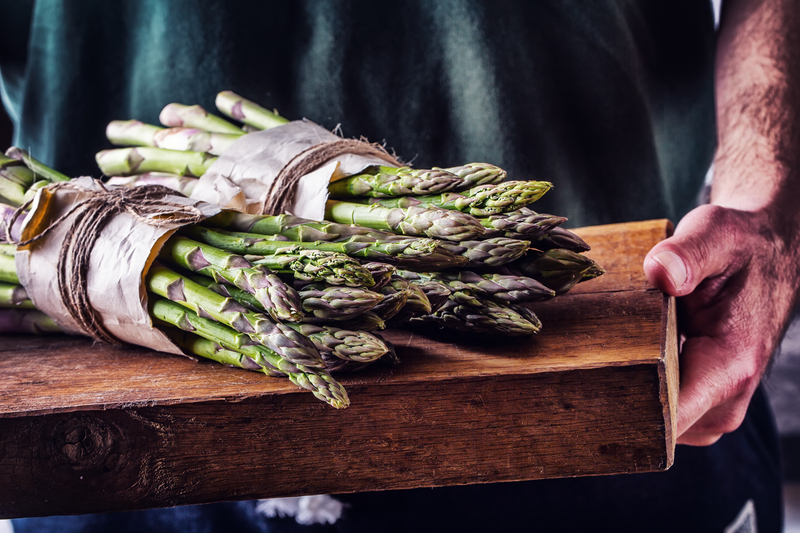Best seasonal crops for spring planting
Posted on 05/03/2024
Spring is a season of new beginnings, blooming flowers, and fresh produce. As the temperatures rise and the days get longer, it is the perfect time to start planting your own crops. Not only does growing your own food give you a sense of accomplishment, but it also ensures that you have access to fresh and nutritious ingredients for your meals. However, with so many options available, it can be overwhelming to decide which crops are best for spring planting. In this article, we will explore some of the best seasonal crops for spring planting, along with their pros and cons.
The top crops for spring planting
1. Leafy greens - Leafy greens like spinach, kale, and lettuce are excellent choices for spring planting. These nutrient-packed vegetables thrive in cool weather and can be harvested continuously throughout the season. They are also easy to grow and require minimal maintenance.
2. Peas - Peas are another popular choice for spring planting as they are packed with fiber, protein, and other essential nutrients. They prefer cooler temperatures and can be planted early in the season. Whether you opt for snap peas or shelling peas, they make a delicious addition to any dish.
3. Radishes - If you're looking for a crop that grows quickly, radishes are the perfect choice. These root vegetables can be planted as soon as the soil can be worked and can be harvested in just three to four weeks. They add a pop of color and peppery flavor to salads and other dishes.
4. Strawberries - Nothing says spring like freshly picked strawberries! These juicy berries not only taste delicious but are also rich in vitamin C and antioxidants. They are relatively easy to grow in containers or garden beds, making them an ideal crop for beginners.
5. Carrots - Carrots are another root vegetable that thrives in cool weather. They require deep, loose soil to grow straight and long roots. With a little bit of patience, you can enjoy fresh and sweet carrots straight from your garden in the spring.

The pros and cons of planting seasonal crops in spring
Pros:
- Fresh and nutritious produce: By planting seasonal crops in the spring, you are ensuring that you have access to fresh and nutrient-dense ingredients for your meals. This can have a positive impact on your health.
- Lower cost: Growing your own food can be a cost-effective alternative to buying produce from the store. Plus, with seasonal crops, you don't have to worry about paying extra for out-of-season items.
- Sustainable option: Growing your own food is an environmentally friendly practice as it reduces the carbon footprint associated with transporting produce from farms to stores.
Cons:
- Weather dependence: Spring weather can be unpredictable, which can affect the growth of your crops. Sudden temperature changes or unexpected frost can damage or kill your plants.
- Pests and diseases: Since spring is also the time for pests and diseases to emerge, it is important to keep an eye on your crops and take necessary measures to protect them.
- Time-consuming: Planting and tending to a garden requires time and effort. If you're short on time, it may be challenging to maintain a garden throughout the season.
Tips for successful spring planting
1. Know your climate zone: Make sure to research your area's climate before selecting crops for spring planting. Certain vegetables thrive better in specific zones, so choose accordingly.
2. Prepare the soil: Before planting, make sure to prepare the soil by adding compost or organic fertilizer. This will provide essential nutrients for your plants to grow and thrive.
3. Start small: If you're new to gardening, start with a small plot or container garden. This will help you learn the ropes without feeling overwhelmed.
4. Water regularly: Adequate watering is crucial for the growth and development of your plants. Make sure to water them consistently, especially during dry spells.
5. Protect from pests and diseases: Keep an eye out for pests and diseases and take necessary measures, such as using organic pesticides, to protect your crops.

Takeaways
Spring is the perfect time to start planting your own crops. Leafy greens, peas, radishes, strawberries, and carrots are some of the best options for spring planting due to their ability to thrive in cool weather. While there are some challenges associated with growing your own food, the benefits far outweigh them. By following some simple tips and techniques, you can have a successful and rewarding spring gardening experience.
Conclusion
In conclusion, incorporating seasonal crops into your spring planting is not only beneficial for your health but also for the environment and your wallet. With a little bit of planning and effort, you can enjoy a bountiful harvest of fresh and nutritious produce throughout the season. So why not give it a try and start reaping the rewards of gardening in the spring? Happy planting!





 Certified and experienced landscapers
Certified and experienced landscapers



 Get a Quote
Get a Quote